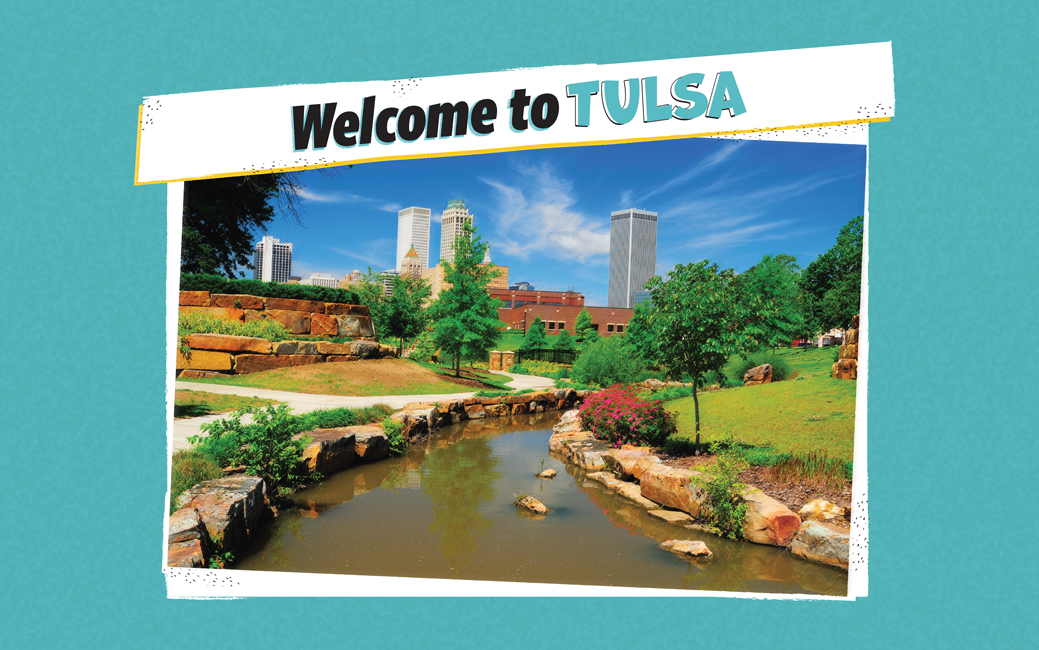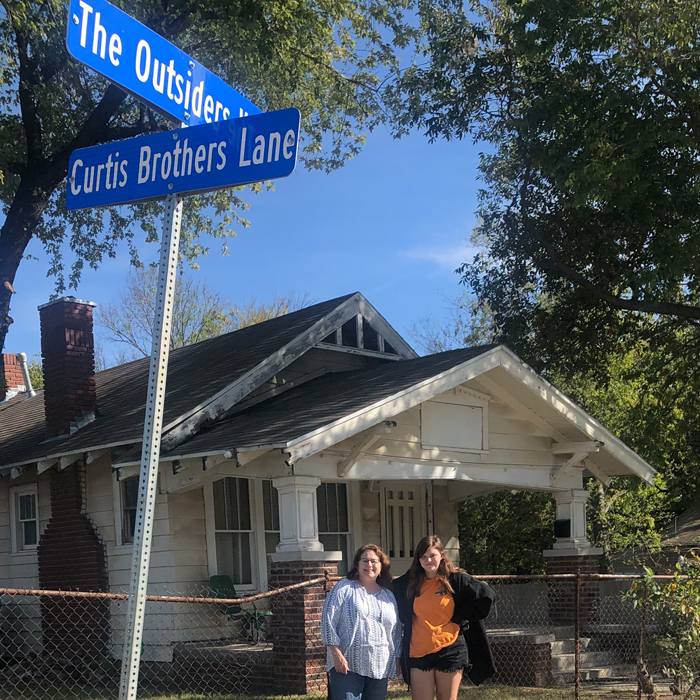Laura’s Picks
Favorite Book Set in Tulsa
The Outsiders
Favorite Unexpected Tulsa Attraction
The Art Deco architecture
Favorite Place for Live Music
Cain’s Ballroom
Favorite Museum
The Philbrook Museum
Favorite Park
Gathering Place

See what Laura Mangan-Grenier ’87 suggests visitors see and do in Tulsa.

High school English teacher Laura Mangan-Grenier ’87 decided she was going to attend Towson University when she was six years old.
“But if you would have told me that I was going to end up in Oklahoma, have kids and stay here because I liked it, I would have told you you were crazy,” she laughs.
Her family moved from Baltimore to west Texas to Oklahoma, and it’s there that Mangan-Grenier has made a home for the last 20 years.
“My favorite thing about Tulsa is the people we’ve met,” she says. “There are other people here who are transplants, so that helped us fit in. But my daughters and I think people here are really friendly in general.”
Perhaps unexpectedly, Tulsa is geared toward taking in the outdoors.
Mangan-Grenier cites Turkey Mountain Urban Wilderness Area and the riverfront’s Gathering Place as top places for hiking with her daughters.

Another favorite city landmark is The Outsiders House Museum.
“My daughters fell in love with the movie, so at least three times a year we have to drive to the house and take pictures outside,” Mangan-Grenier says. “Then we go to the park nearby where they shot the big fight scene.”
Other Tulsa sights she takes visitors to see are the Golden Driller—a 75-foot statue of a man leaning on an oil derrick on the Tulsa County Fairgrounds—and the Praying Hands at Oral Roberts University.
Her family enjoys grabbing pizza—curbside for now—from Hideaway Pizza and sitting on the patio at Los Cabos Mexican Grill and Cantina watching the Arkansas River go by.

Mangan-Grenier suggests taking in the Philbrook Museum, one of the top 50 fine art museums in the country, which has artwork from Picasso, O’Keefe and Rodin, as well as seeing the Gilcrease Museum, which houses the more than 10,000 artworks; 250,000 Native American artifacts and 100,000 rare books and documents collected by Thomas Gilcrease, a member of Creek Nation who became rich during the state’s first oil boom.
The Center of the Universe intrigues children and adults alike. Marked by an unassuming, cracked concrete circle at the intersection of W. Archer St. and N. Boston Ave., the spot is an anomaly no one can quite explain.
“Supposedly if you stand there, the acoustics are like standing in an echo chamber,” Mangan-Grenier says. “Anyone around you cannot hear what you say.”
She recently used Route 66 to drop off her daughter at a sporting event. Four hundred miles of that highway are a part of Oklahoma, just like Mangan-Grenier has become a part of Tulsa.